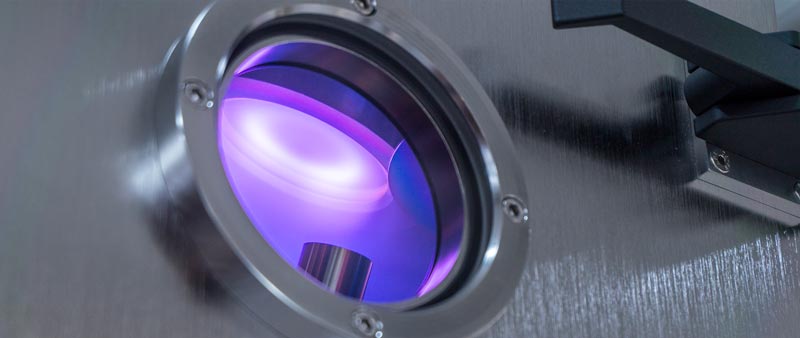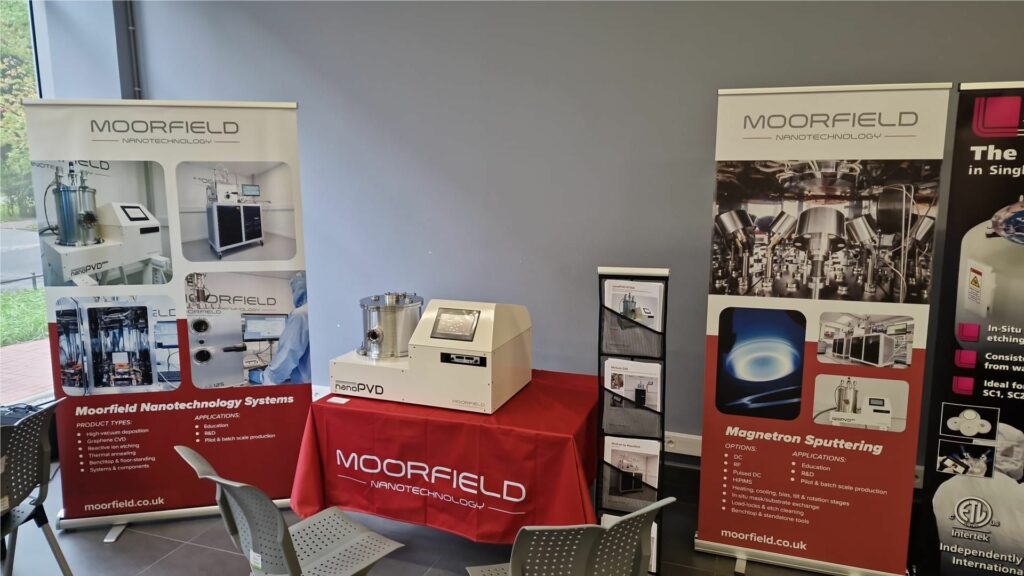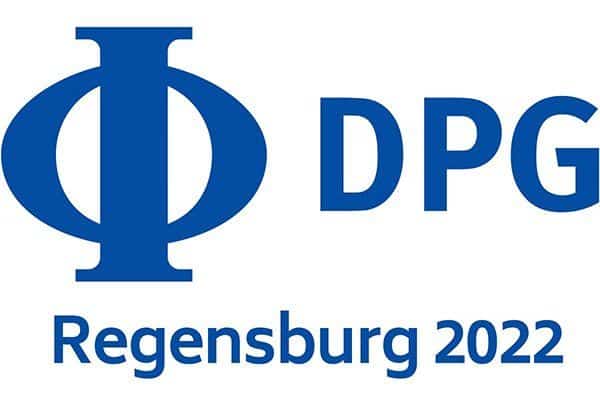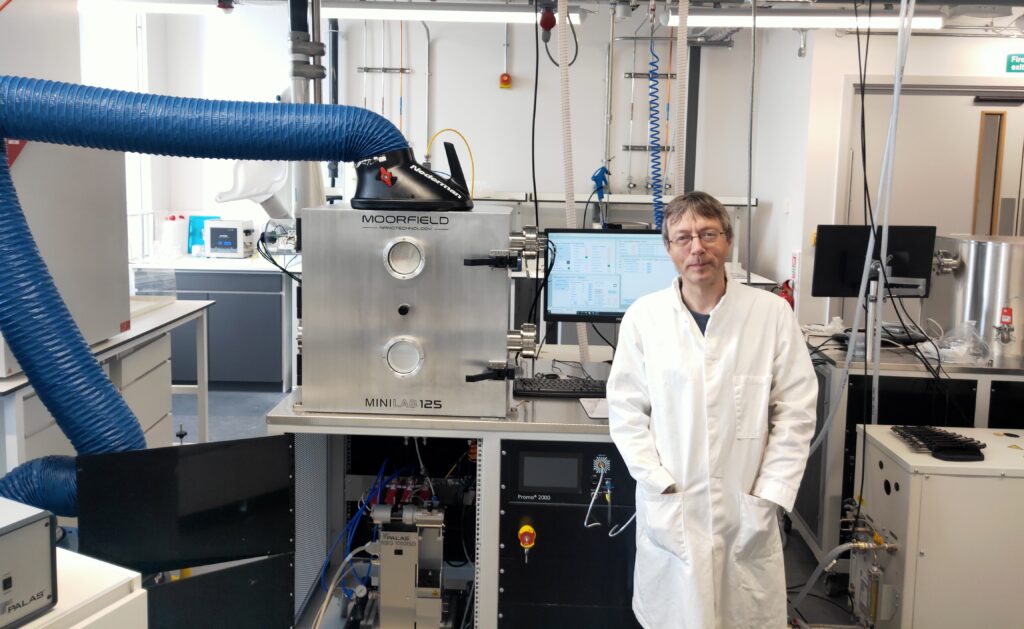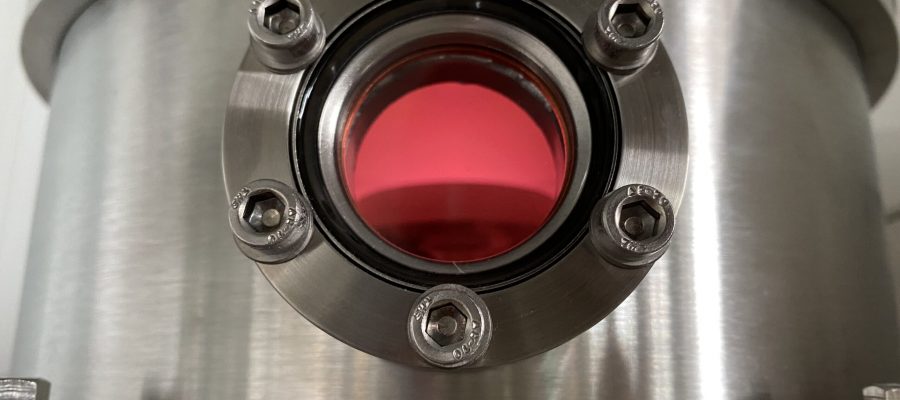In sputtering, deposition material is ejected from a target surface through bombardment by plasma ions. During the process, the substrate (which is to be coated) is placed inside a vacuum chamber, facing one or more magnetron sputtering sources.
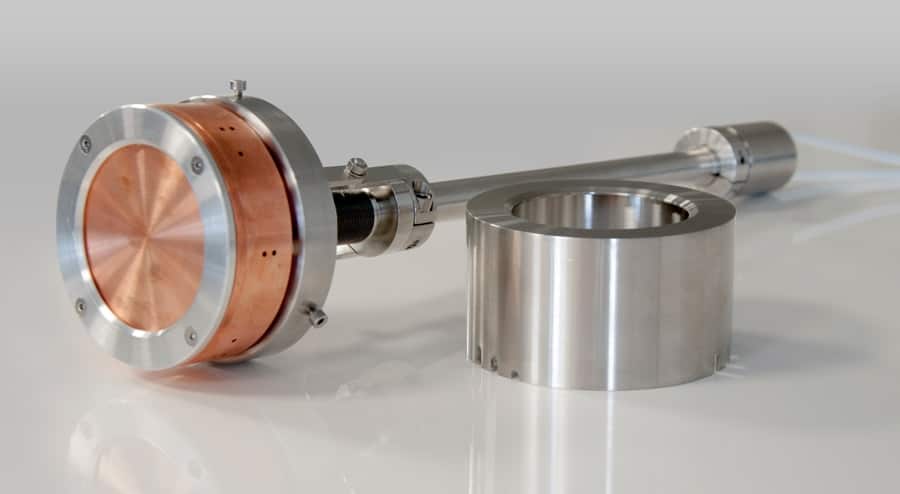
The setup
The chamber is pumped to a high-vacuum pressure, typically in the 10-7 mbar region, or lower. Process gas is then introduced to bring the chamber pressure back to the region of 10-3 or 10-2 mbar. Once a stable, suitable pressure has been achieved, and sputtering can take place.
Most sources used for R&D purposes are circular in form, and are suitable for accepting targets with diameters up to about 4”. Larger targets are suitable for coating larger substrates.
The target is clamped to a water-cooled block in the centre of the source that contains a set of magnets. This block is also connected to the output of a power supply. A grounded “dark-space” shield is placed near the target outer edge.
The process of magnetron sputtering
During sputtering, negative electrical bias is supplied to the target from the power supply. This causes the splitting of the process gas to form a plasma of charged species (electrons and positive ions). The positive ions are accelerated by the negative bias towards the target surface. On hitting the target surface, momentum transfer causes ejection of target material from the surface. The efficiency of ejection is measured through a parameter known as the ‘sputtering yield’.
During sputtering, electrons are continuously released from the target surface into the plasma, where they act to sustain the plasma through collisions with gaseous species. Due to the profile of the magnetic field, these electrons are confined close to the target surface – as such, plasma generation is strongest in this region. This allows for high deposition rates as the target is exposed to a high-density plasma.
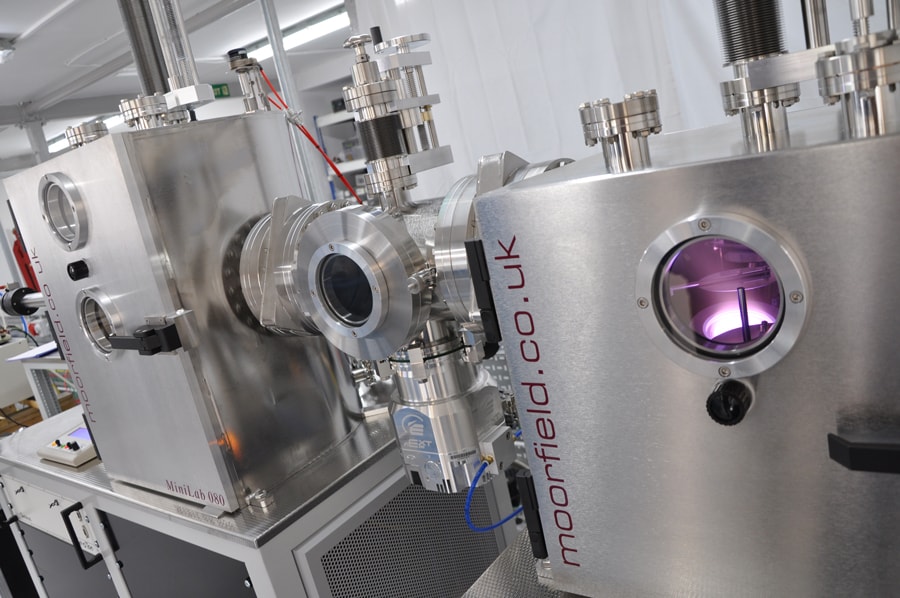
DC and RF power supplies in Magnetron sputtering
Magnetron sputtering is suitable for deposition of most material types. For metals, a DC power supply works well. However, for materials with poor electrical conduction (e.g., dielectrics), RF power is often required—this enables transmission of bias through the target. Pulsed DC power provides enhanced performance for reactive sputtering (e.g., deposition of a metal through a nitrogen-containing plasma, to form a metal nitride on the substrate surface). The emerging field of HiPIMS allows for formation of extremely dense films through the use of specialist pulse controllers.
Magnetron sputtering results are very dependent on the in-chamber environment, so accurate process gas and pressure control are required for best, repeatable results. Substrate temperature is also influential, affecting, e.g., the surface mobility of species as they arrive at the substrate. Application of bias to a substrate can be used to “pound” material down as it arrives, for forming denser layers.
